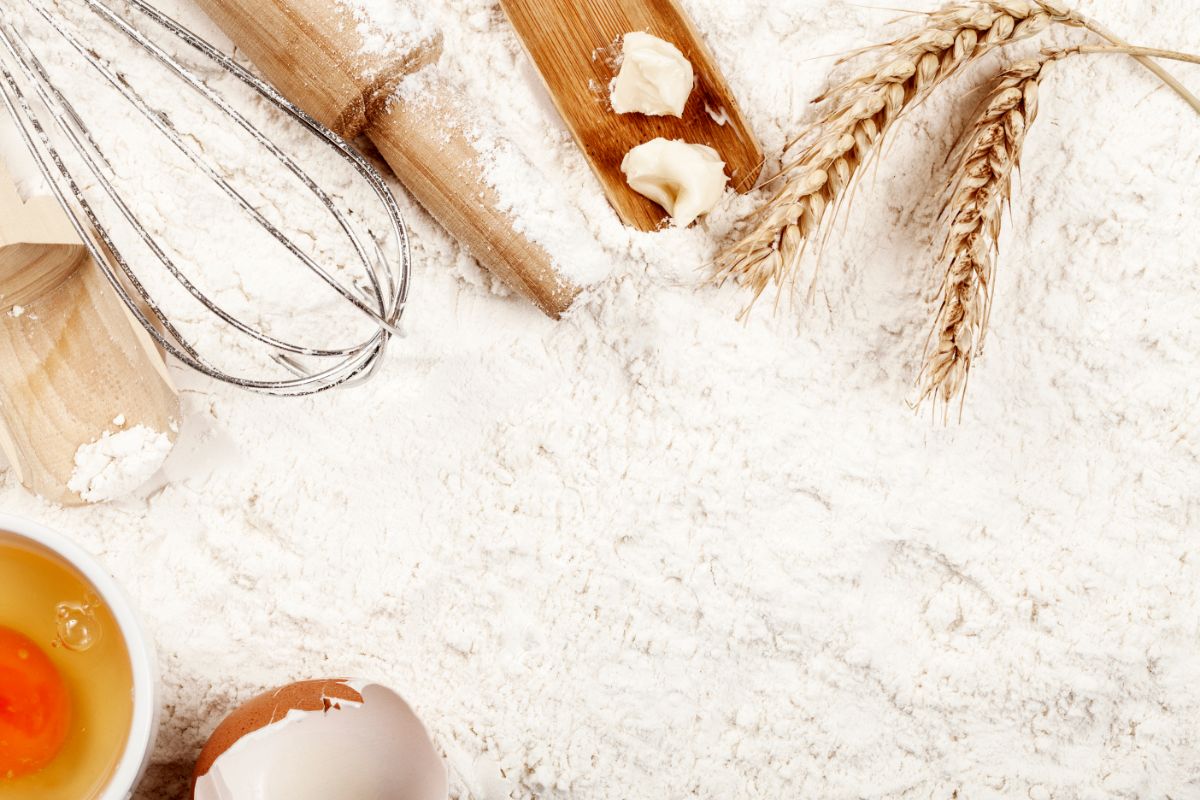Anyone who is not an experienced baker will find themselves confused when scanning supermarket shelves for a simple bag of flour.
If you weren’t already aware, there are many varieties of flour available, and it is important that you know which one you’ll need to use for when you bake specific dishes. This includes bread flour, almond flour, self rising flour, whole wheat flour, hard wheat and soft wheat flour.
So, are cake flour and ‘plain’ flour the same thing? What is the difference between these two flour varieties? If you are itching to find out the answer, look no further.
In this guide, we will show you all you need to know about what sets cake flour and AP flour apart.
Plain Flour Vs. Cake Flour

Plain flour – which is better known as all-purpose flour – is very different to cake flour.
The two should be used for separate purposes, and it is vital that you know how to use each one if you want to start baking.
Before we start looking into what you would use cake flour or all-purpose flour for, you should know exactly what sets these two varieties of flour apart.
Here are 3 factors that make cake flour and all-purpose flour completely different types of flour.
Protein Content
The first thing that sets these two types of flour apart is one of the naturally occurring ingredients: protein.
Flour is generally made from finely milled grain, nuts, seeds, beans, and other teeny tiny ingredients. Some of these specific ingredients naturally contain a lot of protein.
AP flour will typically contain more protein – up to 12% – while the protein content found in cake flour is more likely to be as low as 7%.
This may not sound important, but protein plays an important part in the production of gluten, which is present in most baked goods.
Gluten formation is what gives bread its chewier yet softer texture, and it is what makes the dough so stretchy. Less gluten achieves the opposite.
While bread is supposed to be firmer and chewier, cake is not supposed to have this same consistency. Therefore, to make delicate cakes, you will need to use cake flour, since it has a lower protein content, resulting in a lower gluten content.
You would expect gluten-free flour to contain less protein, since it has no gluten content. However, the opposite is actually true: the protein content found in gluten-free flour is higher than both all-purpose and cake flour.
Consistency
The main difference between all-purpose flour and cake flour is the texture of the product. All-purpose flour tends to feel a lot courser and heavier than cake flour.
The reason for this is that cake flour has to be extra fine in order to help create a light, fluffy texture in a cake. If the flour is too heavy, it’ll create a chewy cake.
If you were to use AP flour while baking a cake, the texture would not be as airy and light as you would want it to be.
This is why cake flour has its name; it was manufactured specifically to be used in a cake recipe.
Typically, cake flour would not be used to make bread, for this reason. However, it can be used to make banana bread to add an airier, lighter consistency.
Bleach Used In Cake Flour
Another difference between cake flour and all-purpose flour is the use of bleach.
Bleached cake flour is actually illegal in many parts of the world, but in the US, cake flour is often bleached for a number of reasons.
The main reason manufacturers opt for bleaching flour is it give it its bright while coloring, but it can also affect the texture of a cake.
Bleached flour can help to make a cake moister, give it a more tender crumb, and even makes it less likely to burn while it’s baking.
All-purpose flour, on the other hand, is not bleached, and neither are most types of flour. Cake flour is not always bleached, but it can be.
The Purpose Of Cake Flour
Cake flour is used primarily for baking cakes. The extra fine consistency of this flour helps cakes to become airy and fluffy when they are baked.
The Purpose Of All-Purpose Flour
AP flour can be used for just about anything else that isn’t a cake. It can be used to thicken sauces and create dough and pastries.
How To Make Your Own Cake Flour

If you want to make a cake, but you don’t have any store bought cake flour at home, it is possible to create your own DIY cake flour using all-purpose flour.
Here is how to make some cake flour substitute if you don’t have any real cake flour.
All you’ll need to make the transition some form of leavening agents, e.g., baking powder or cornstarch. Leavening agents create a chemical reaction while baking which helps cakes to rise.
While baking powder will work, cornstarch is recommended. If you were to use baking powder, it would be considered to be self rising flour.
Using a measuring cup, measure out one cup of all-purpose flour, and add it to a large bowl. Measure out two tablespoons of cornstarch, and add it to the flour.
Stir the flour and cornstarch mixture together, and you’ll have created a level cup of DIY cake flour. You can now use a cup of cake flour for when your next particular recipe calls for it.
Final Thoughts
There are many differences between cake flour and all-purpose flour.
All-purpose flour contains more gluten, cake flour is often bleached, and cake flour is a lot finer.
If you want to make a cake flour substitute, simply add two tablespoons of cornstarch to some substitute all-purpose flour. You can use this for your next baking recipe.
Happy baking!










